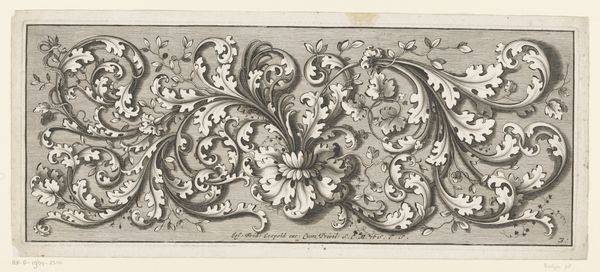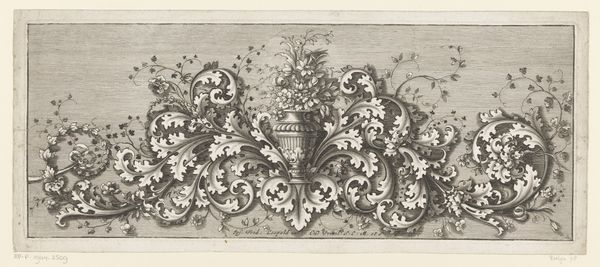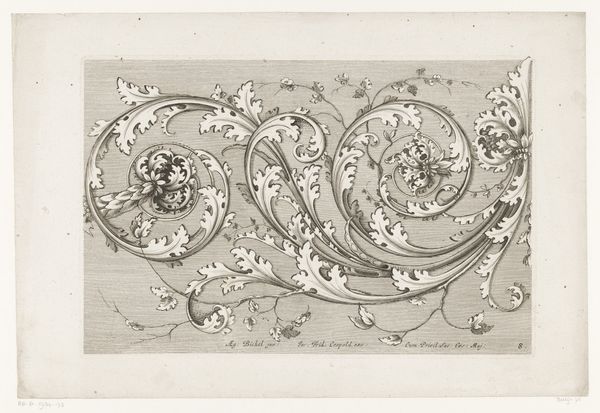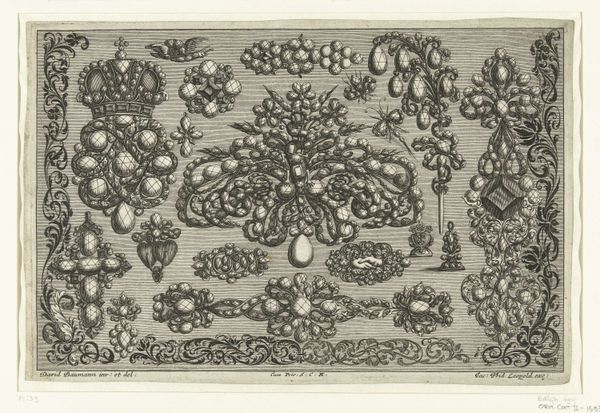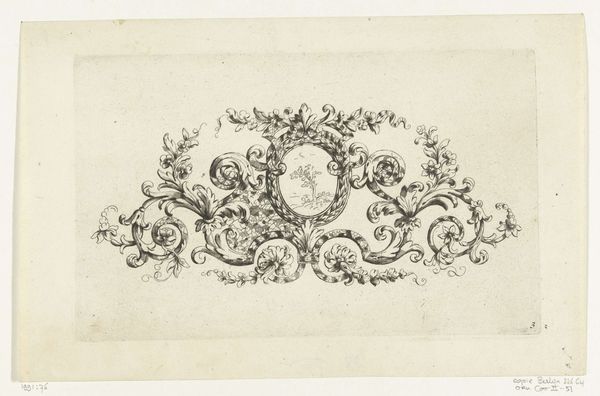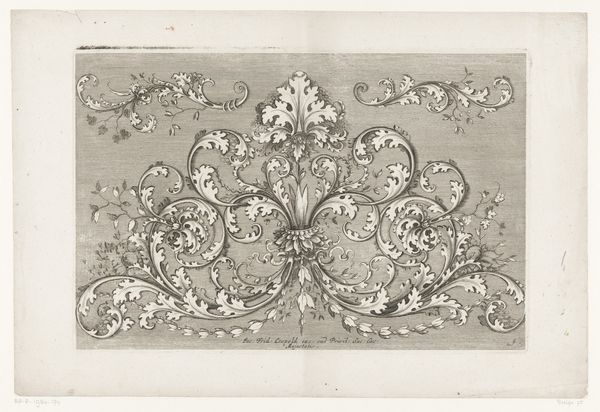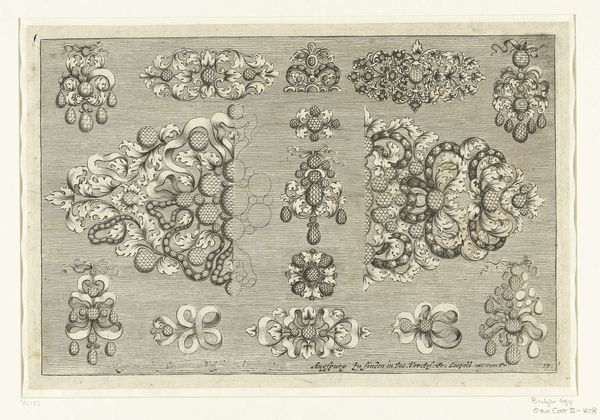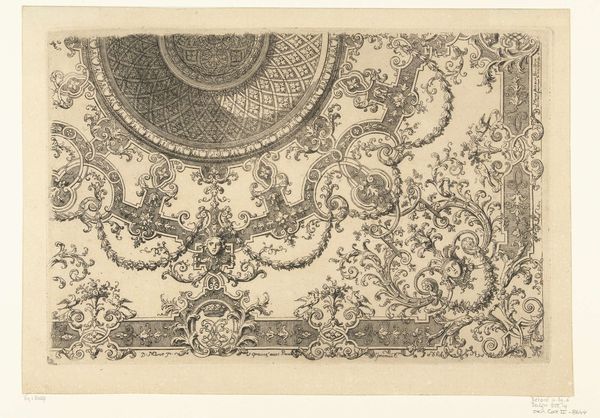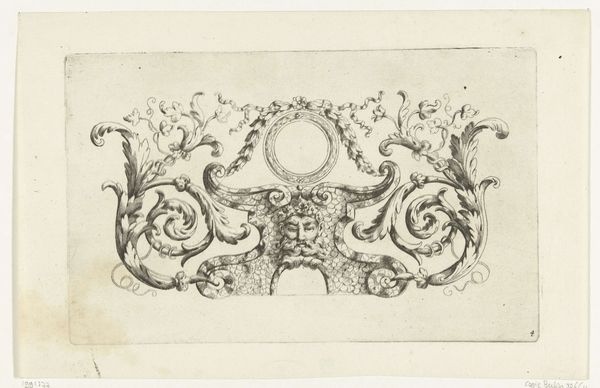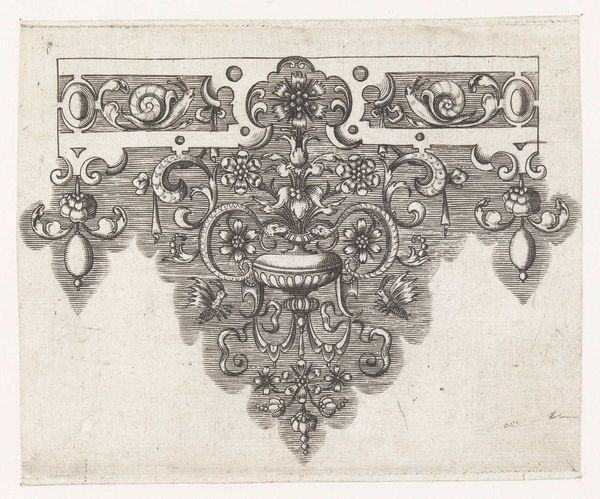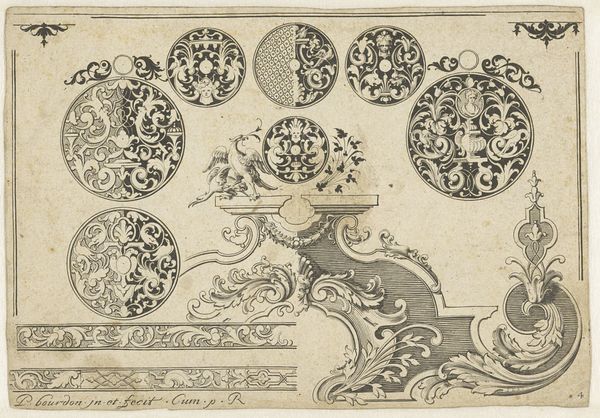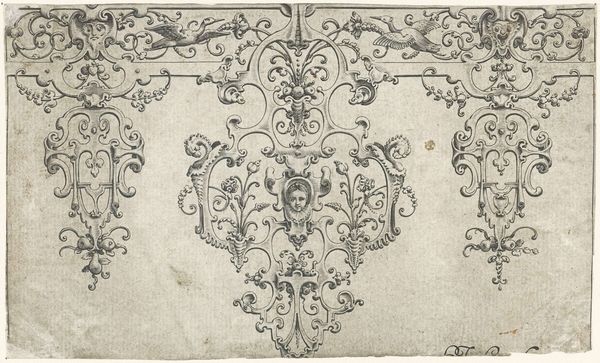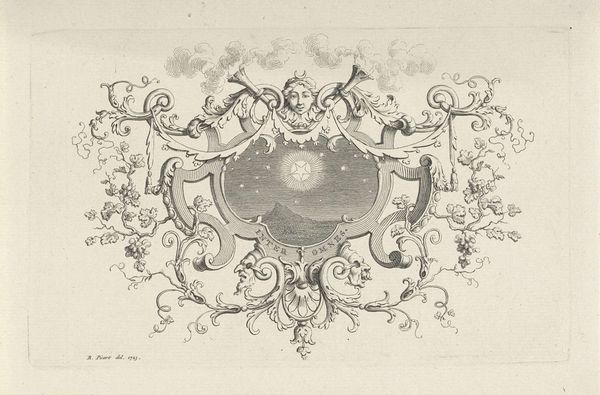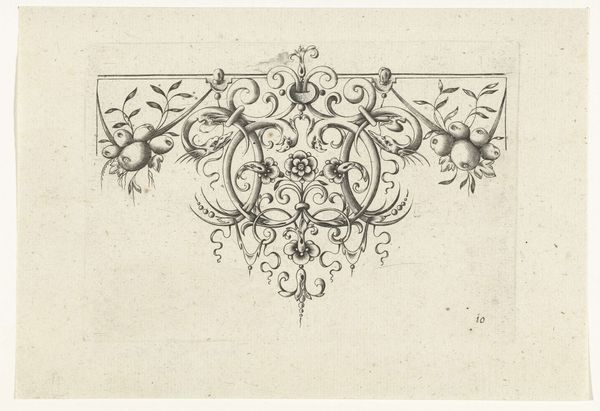
graphic-art, print, engraving
#
graphic-art
#
baroque
#
pen drawing
# print
#
old engraving style
#
engraving
Dimensions: height 168 mm, width 420 mm
Copyright: Rijks Museum: Open Domain
Editor: So, this is "Acanthusranken," a print made in 1698. It's unsigned, so the artist is anonymous. It's quite intricate, done with engraving. The design feels dense, almost overwhelmingly floral. What catches your eye when you look at it? Curator: The acanthus leaf motif, of course! Look at how it dominates the entire composition. Acanthus leaves, historically, represented enduring life and immortality. Think about their presence in classical architecture, like Corinthian columns. Does that connection spark any ideas for you? Editor: Immortality... Interesting! It gives the work a sense of timelessness despite its specific Baroque styling. Curator: Precisely! And consider the *ranken*, the tendrils. They suggest growth, movement, reaching. The anonymous artist, working in the Baroque period, is not just decorating, but invoking a dialogue with nature’s inherent symbolism. What kind of patronage might inspire such an ornate and elaborate design? Editor: Maybe for a noble family wanting to showcase their refined taste and connection to classical ideals? Or perhaps for use by artisans, as patterns for their own creations? Curator: Excellent observations. These prints functioned as both symbols of status and practical templates. Imagine the cultural weight carried within these seemingly decorative forms! It shows up again and again. Editor: So, it’s about more than just beauty. It’s about shared knowledge and visual language? Curator: Exactly. These recurring visual themes connect us to the past and provide glimpses of enduring aspirations and beliefs. They are how humans seek meaning through objects, images and ideas. Editor: It's fascinating how a single leaf can contain so much history and meaning! Curator: Indeed, and hopefully sparks curiosity to look more closely at seemingly commonplace objects.
Comments
No comments
Be the first to comment and join the conversation on the ultimate creative platform.
